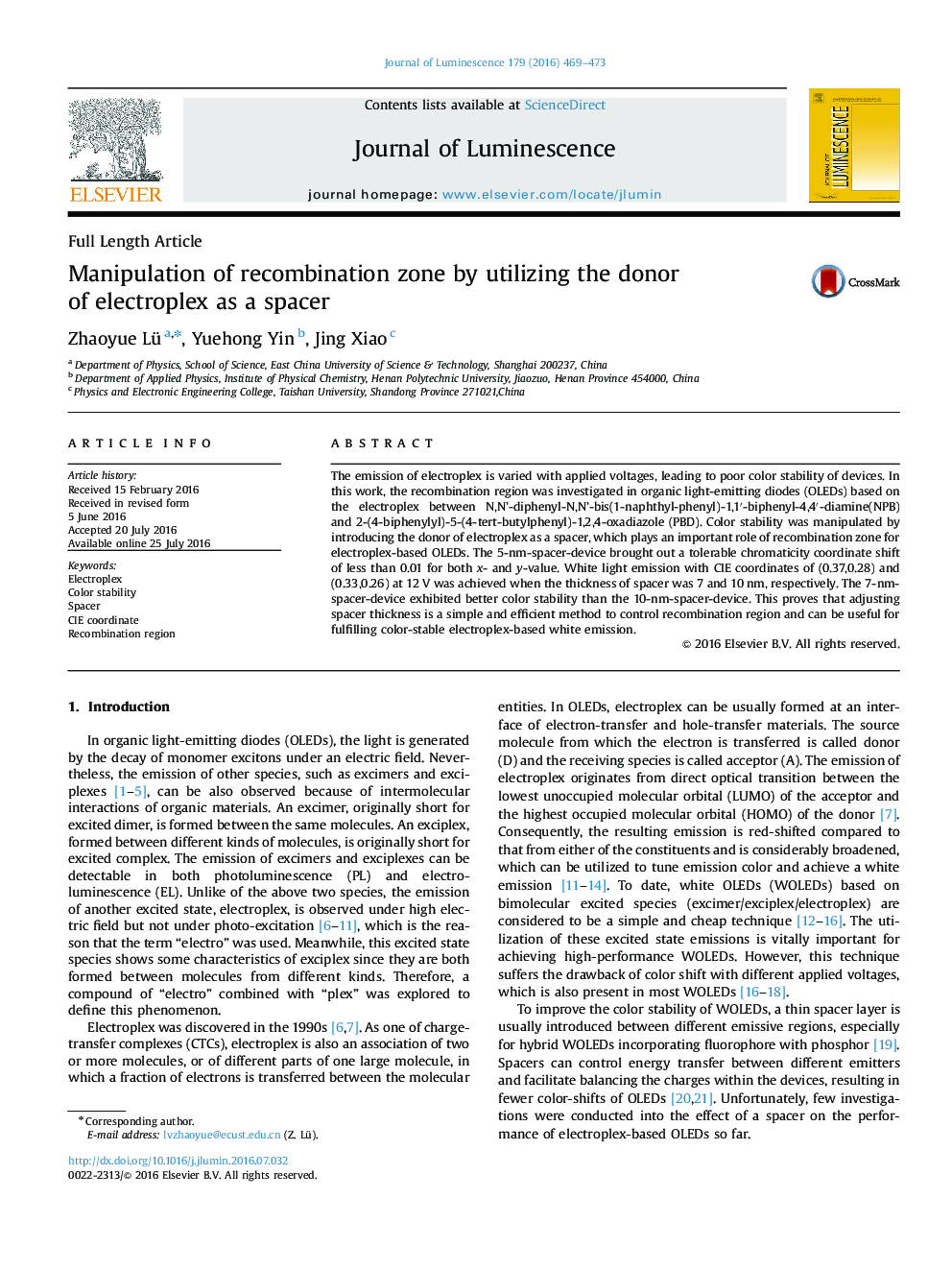| Article ID | Journal | Published Year | Pages | File Type |
|---|---|---|---|---|
| 5398353 | Journal of Luminescence | 2016 | 5 Pages |
Abstract
The emission of electroplex is varied with applied voltages, leading to poor color stability of devices. In this work, the recombination region was investigated in organic light-emitting diodes (OLEDs) based on the electroplex between N,N'-diphenyl-N,N'-bis(1-naphthyl-phenyl)-1,1â²-biphenyl-4,4â²-diamine(NPB) and 2-(4-biphenylyl)-5-(4-tert-butylphenyl)-1,2,4-oxadiazole (PBD). Color stability was manipulated by introducing the donor of electroplex as a spacer, which plays an important role of recombination zone for electroplex-based OLEDs. The 5-nm-spacer-device brought out a tolerable chromaticity coordinate shift of less than 0.01 for both x- and y-value. White light emission with CIE coordinates of (0.37,0.28) and (0.33,0.26) at 12Â V was achieved when the thickness of spacer was 7 and 10Â nm, respectively. The 7-nm-spacer-device exhibited better color stability than the 10-nm-spacer-device. This proves that adjusting spacer thickness is a simple and efficient method to control recombination region and can be useful for fulfilling color-stable electroplex-based white emission.
Related Topics
Physical Sciences and Engineering
Chemistry
Physical and Theoretical Chemistry
Authors
Zhaoyue Lü, Yuehong Yin, Jing Xiao,
